Libby Fischer Hellmann's Blog, page 22
October 1, 2015
Spy Tradecraft: A Baker’s Dozen
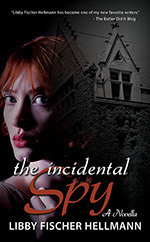 As some of you know, World War Two has always called to me, and the research I did for An Incidental Spy was a journey of discovery into the creative ways spies communicated with each other and their spymasters.
As some of you know, World War Two has always called to me, and the research I did for An Incidental Spy was a journey of discovery into the creative ways spies communicated with each other and their spymasters.
Here in the US, well before we joined the war, Nazi spies were active on our shores, desperate to find out what US scientists, politicians and generals were planning. At the same time the Allies had spies on the Continent, and, after the war started, behind German lines. Whatever side you were on, secrecy was vital and passing secrets safely involved all kinds of clever subterfuge.
Last winter I wrote a blog about tradecraft based on my visit to the International Spy Museum in Washington and Bletchley Park in the UK. Many of the tools (with the exception of code-breaking) I discovered are deceptively simple, designed to blend into the background: clever disguises, surveillance, and unexpected ways to exchange secure messages. And, as I said in my post on Jungle Red Writers last week, some of the inventions that came out of WW2 are undergoing a renaissance today. So, I thought I’d list a Baker’s Dozen espionage techniques, some of which I think are rather ingenious.
Classic WW2 Tradecraft Secrets
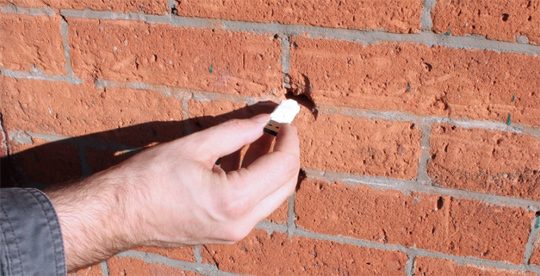 1. The dead drop – A secret pre-arranged place to leave information, photos or other items so they can be picked up without meeting your fellow agent face to face and compromise security.
1. The dead drop – A secret pre-arranged place to leave information, photos or other items so they can be picked up without meeting your fellow agent face to face and compromise security.
2. Hollowed out coins – Coins carried messages, most famously in 1953 when a Russian agent accidentally gave his hollow nickel, containing a microphoto, to a newspaper boy. It took the FBI four years to decode the instructions embedded in the photo.
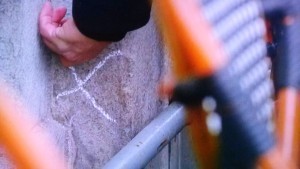 3. Signalling a drop or other important event with chalk – This is a subtle way to indicate where you’ve hidden items that easily washes off. You could also move a flag or flowerpot to signal a meeting, or put a light in a certain window. A book in a car window might signal a meet too.
3. Signalling a drop or other important event with chalk – This is a subtle way to indicate where you’ve hidden items that easily washes off. You could also move a flag or flowerpot to signal a meeting, or put a light in a certain window. A book in a car window might signal a meet too.
4. Dropping an orange peel to mark the way – Just like Hansel and Gretel, the Russians apparently were fond of the orange peel trick, which lets spies leave a brightly colored trail so ordinary and everyday it doesn’t attract attention.
5. Pyrofilm – “This message will self-destruct in five seconds…” Mission Impossible-style messages were first developed during World War II. Spies could keep sensitive information in a special Pyrofilm Combustible Notebook whose film caught fire when triggered by a special pencil. The message would burn up in seconds, leaving no evidence.
6. Silent maps – The last thing you need is a rustling map. To avoid detection, spies used maps printed on silk, which didn’t rustle when you unfolded them. A simple trick but it saved lives.
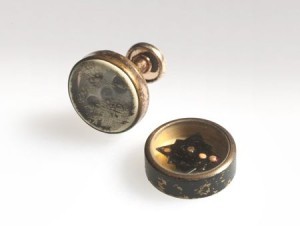 7. Cufflink compasses – British military intelligence organization MI9 gave spies cufflinks containing tiny compasses, a trick used from the 1930s right through to the end of WW2.
7. Cufflink compasses – British military intelligence organization MI9 gave spies cufflinks containing tiny compasses, a trick used from the 1930s right through to the end of WW2.
8. The jack-in-the-box dummy – A Jack-in-the-Box was simply a suitcase containing a human-shaped dummy. From the shoulders up it looked just like a person, perfect when a spy wants to escape surveillance. All you did was wait for a sharp corner, fall out of the passenger side, and open the Jack-in-the-Box. The five seconds you were out of view was enough to roll out of the vehicle into safety in the shadows.
9. The standard number 2 pencil – How dangerous can a pencil be? Very, when it’s used as a gadget to deliver a pill or powder into someone’s drink. All spies did was twist the eraser and the metal band around it to dispense up to two and a half CCs of deadly drugs, sleeping powder or a hallucinogenic.
10. Steganography – steganography is the fine art of leaving a coded message in plain sight, and the CIA perfected it. Its creators were inspired by the way magicians communicated when doing tricks. The technique involved all sorts of clever deceptions like tying your shoelaces in various ways, each method with its own secret message: “follow me” or “we’ve been compromised”.
11. The brush pass – this is used to pass materials between agents, developed for places where US agents were constantly watched. It takes practice to walk by another person and invisibly pass them something, and the spies’ efforts had to be very carefully choreographed.
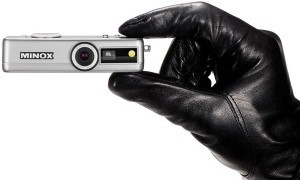 12. The Minox camera– The Minox was a ‘subminiature’ tiny camera produced in 1936 by the German Walter Zapp. A favorite with spies from both sides, it was perfect for subtly snapping photos of secret documents and locations.
12. The Minox camera– The Minox was a ‘subminiature’ tiny camera produced in 1936 by the German Walter Zapp. A favorite with spies from both sides, it was perfect for subtly snapping photos of secret documents and locations.
13. A pack of cigarettes Spies might leave important information on microchips or microdots in or on a pack of cigarettes casually dropped on the ground or left in a restaurant.
5 Innovative WW2 Spy Gadgets
In addition to basic tools, the Allies were busy inventing eccentric, creative, weird and wonderful gadgets and tools for their spies. Think M from James Bond and you get the picture.
1. Disguised radios – A special team disguised radios to look like everyday objects. If you were caught with a radio in France you’d be taken by the Gestapo, probably tortured and almost certainly shot, so secrecy was vital. One version was a radio hidden in a Huntley & Palmer biscuit tin, sent to operatives in France via risky night time parachute drops.
2. Special shoes to leave false footprints – In the sandy Far East allied raiding parties wore special shoes that left bare footprints instead of heavy army boots, which were a dead giveaway.
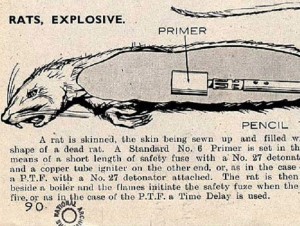
3. Rat bombs – The Allies filled dead rats filled with explosives and left them in German-run factories. When the workers found the animals and threw them in the furnace, they exploded. In the end the Germans were so paranoid they left any dead rats where they were, explosive or otherwise. As a result diseases spread as the corpses rotted, a double-whammy of a way to wage psychological war on the enemy.
4. Pipe pistols – This idea never got past prototype stage, but there were plans for a pipe which could fire .22 caliber bullets through the stem.
5. Secret shaving cream and toothpaste tube chambers – A specially adapted tube of shaving cream or toothpaste provided a cool hiding place for messages and objects. The tubes looked just like the real thing, branded with manufacturer logos, but while the top of the tube contained genuine cream or paste, the other end concealed a secret compartment.
It’s fascinating to see how often conflict drives runaway innovation. These gadgets and procedures wouldn’t have been invented without a war to drive them, one of the many reasons the period is such an inspiration.
The post Spy Tradecraft: A Baker’s Dozen appeared first on .
September 27, 2015
The Incidental Spy — Where It Came From
 Hi, all. Now that the The Incidental Spy is out in print (the ebook is supposed to be up by October 9 at Stark Raving Press), I thought I’d tell you where I got the idea. This segment is part of an interview that I will excerpt all week on the blog.
Hi, all. Now that the The Incidental Spy is out in print (the ebook is supposed to be up by October 9 at Stark Raving Press), I thought I’d tell you where I got the idea. This segment is part of an interview that I will excerpt all week on the blog.
In addition, there’s a summary of wartime spies in the US that you might not know about over at Jungle Red Writers, where I guest posted the other day.
Questions? Leave a comment and I’ll be sure to back to you. Btw, you can find the book on Amazon here and B&N here.
The post The Incidental Spy — Where It Came From appeared first on .
September 25, 2015
A Discussion About Great Writing in the Mystery Genre
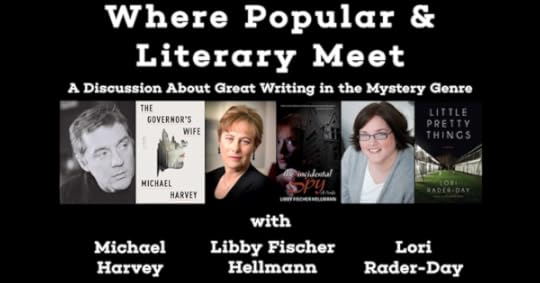
I hope you’ll join me along with Michael Harvey and Lori Rader-Day for a discussion about Great Writing in the Mystery Genre.
Here’s the info:
Genre fiction is widely read, even admired, but seldom considered the equal of its literary counterparts. The mere label “mystery” acts as a sort of downgrade.
Panelists Michael Harvey, Lori Rader-Day and Libby Fischer Hellmann will explore the whos, whats, whys and hows of great mystery fiction. Don Evans will moderate.
Join us Sunday, October 4, 5 pm at 57th Street Books. 1301 E. 57th Street, Chicago. Hope to see you there!
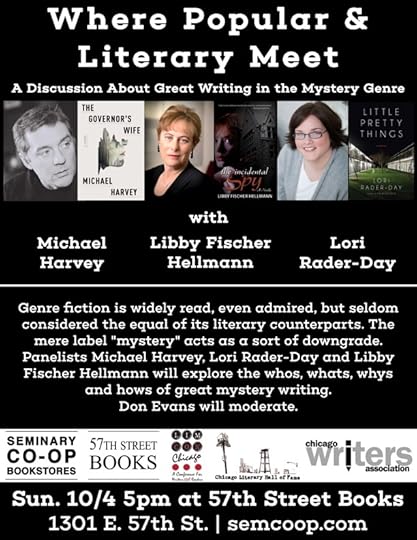
The post A Discussion About Great Writing in the Mystery Genre appeared first on .
September 16, 2015
Is It OK To Mix Fictional And Non-fictional Characters?
Purists probably disagree. But I think it’s OK to bring a mix of fictional and ‘real’ characters into a story. TV has been doing it for a while with docu-dramas that blend real footage and eyewitness accounts with dramatized content played by actors. It has proven to be a popular format, and it works equally well for fiction.
It’s easy to understand. Some true stories are so amazing you couldn’t make them up. They’re too good to change, too ingrained in our culture to ignore. And some of the people who played a part in history are too powerful to leave out. They sit at the center of any fictional plot set in their time, whether you like them or not.
Revolutionary Cuba… without Castro or Che?
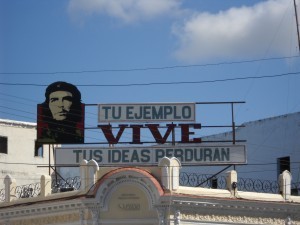 If you’ve read my thriller Havana Lost, imagine if I’d replaced Fidel Castro or Che Guevara – or even Meyer Lansky—with fictional characters. The story would never have worked, and all that rich, real historic background wasted. Sometimes the truth is what it is, and as an author you have to maintain credibility by using real folks.
If you’ve read my thriller Havana Lost, imagine if I’d replaced Fidel Castro or Che Guevara – or even Meyer Lansky—with fictional characters. The story would never have worked, and all that rich, real historic background wasted. Sometimes the truth is what it is, and as an author you have to maintain credibility by using real folks.
Narcos – A story more real than reality
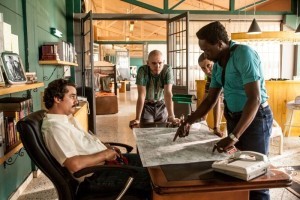 The makers of the hit mini-series Narcos on Netflix know this. The series is a patchwork of fact and fiction. It uses plenty of fictional drama and characters, but the plot is set against a backdrop of real events, including genuine footage of Pablo Escobar and his gang from newsreels and documentaries.
The makers of the hit mini-series Narcos on Netflix know this. The series is a patchwork of fact and fiction. It uses plenty of fictional drama and characters, but the plot is set against a backdrop of real events, including genuine footage of Pablo Escobar and his gang from newsreels and documentaries.
For me, the overall impact is much larger than the sum of the parts. The story might not be wholly accurate, but the historical truths that it portrays add to its authenticity. And viewers are going nuts for it. Some say its audience is going to be bigger than Breaking Bad, which was, of course, pure fiction.
Blending truth with fiction in An Incidental Spy
 In my latest novella, An Incidental Spy, I’ve used a mix of fictional and nonfictional characters. Arthur Compton is real, the US physicist who won the Nobel Prize in Physics in 1927 and headed up the early years of the nuclear fission experiments at the University of Chicago. So, obviously, is Enrico Fermi and some of the scientists I mention. Others come straight out of my imagination.
In my latest novella, An Incidental Spy, I’ve used a mix of fictional and nonfictional characters. Arthur Compton is real, the US physicist who won the Nobel Prize in Physics in 1927 and headed up the early years of the nuclear fission experiments at the University of Chicago. So, obviously, is Enrico Fermi and some of the scientists I mention. Others come straight out of my imagination.
The spying element of my plot has its roots in the truth, too. The allies and enemy did spy on one another, and things did get very unpleasant. But, as far as I know, there was no Lena. You can read more about Atomic Spies here on Wikipedia.
In fact, I love to mix the real with the fictional. I try not to overstep the mark by having actual people do things I can’t prove. But I do research them in great detail and insert them into the plot where they help make the plot richer and deeper—and captivating.
Following in the footsteps of giants – Philip Kerr
I’m not the only author who blends the real with the fictional. It’s a device used to brilliant effect by Philip Kerr, who went all the way with Reinhard Heydrich in Prague Fatale. In fact, The Independent, a UK publication lauds his style.
“Unlike some writers of historical thrillers, Kerr is able to let period detail live its own life. The early passages, where Gunther investigates the killing of a foreign worker on a Berlin S-Bahn station, are particularly effective: the blacked-out city is hospitable to murder, food is short and it is reported that the tapir in the city zoo has been stolen and eaten. On the radio, Hitler and Goebbels instruct the nation to give to Winter Relief. The Wehrmacht has reached Kiev, and nothing can go wrong, surely. ”
I think Kerr’s books are outstanding, much stronger and more emotional than a less-than-accurate backdrop would be.
How about you?
If you think it’s OK to blend fact and fiction, let me know. If not, I would love to know why. I love a heated debate. Bring it on!
The post Is It OK To Mix Fictional And Non-fictional Characters? appeared first on .
September 9, 2015
The Manhattan Project — Chicago Style
Everyone’s heard about Los Alamos, where they built and tested the first nuclear weapon. But few people seem to know about the role that Chicago played in the development of nuclear fission and its ultimate military application. That fascinated me when I set off on a voyage of discovery into the dark days before the bomb. Before Enola Gay, before Hiroshima, when the Allied war effort struggled against the Nazis’ seemingly unbeatable might.
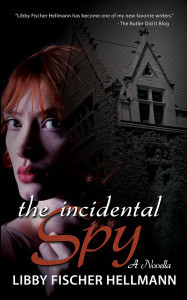 My latest novella, An Incidental Spy, tells a good part of that story and, hopefully, will give readers insight into the international situation, the desperation of the various spy networks involved—both allied and enemy—and the ordinary lives that were destroyed in the process (I’ll have more to say about the characters in the story later). And while it’s hard to see the development of nuclear weapons as a good thing in retrospect, it’s likely the first two, dropped on Japan, saved millions of lives. As they say, desperate times tend to bring desperate measures.
My latest novella, An Incidental Spy, tells a good part of that story and, hopefully, will give readers insight into the international situation, the desperation of the various spy networks involved—both allied and enemy—and the ordinary lives that were destroyed in the process (I’ll have more to say about the characters in the story later). And while it’s hard to see the development of nuclear weapons as a good thing in retrospect, it’s likely the first two, dropped on Japan, saved millions of lives. As they say, desperate times tend to bring desperate measures.
The fact is that Chicago played a key role during those dark days until December, 1942. Under the leadership of Arthur “Holly” Compton, the University of Chicago became the first site in the United States to actually create a sustained nuclear chain reaction. One of the first prototypes of a nuclear reactor, affectionately called “The Pile,” 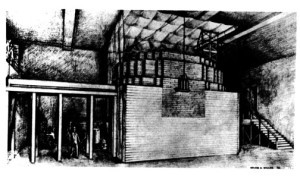 had been built under Stagg Field, the stadium where U of C students played football. That’s where The Incidental Spy takes place, btw.
had been built under Stagg Field, the stadium where U of C students played football. That’s where The Incidental Spy takes place, btw.
But there was much more going on after the first chain reaction was produced, including work at Oak Ridge TN and Fermilab (also near Chicago) on our side of the Atlantic. There were also a host of parallel German efforts on the other.
Oak Ridge – Tennessee’s big wartime secret
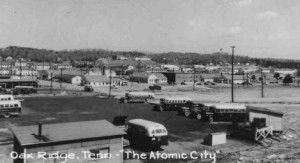 Oak Ridge didn’t exist, at least on the maps of the time. During WW2 it was simply known as the “Clinton Engineering Works.” Covering 60,000 acres of farmland near the Appalachian Mountains, it was one of America’s three most secret ‘cities’, each carefully chosen to play a part in the Manhattan Project.
Oak Ridge didn’t exist, at least on the maps of the time. During WW2 it was simply known as the “Clinton Engineering Works.” Covering 60,000 acres of farmland near the Appalachian Mountains, it was one of America’s three most secret ‘cities’, each carefully chosen to play a part in the Manhattan Project.
The Director General at the time evacuated the original inhabitants and turned the cities into atomic bomb nurseries. The people employed there were tasked with making the materials needed for a bomb, and their work with uranium was strictly top secret. Some workers never spoke about it, staying silent long after the war ended.
A total of 75,000 government staff and builders worked at the site between 1942 and 1945. But most ordinary folk had never heard of the technology when it was finally used to flatten Hiroshima on August 6th 1945, an act which stopped the war with Japan more or less instantly.
Today Oak Ridge is an ordinary town, proud of its atomic heritage. It’s home to two of the planet’s most advanced neutron science research labs and the US government is still the area’s biggest employer.
German heavy water plant experiments in Norway
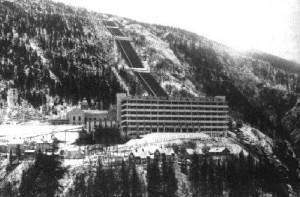 While our home-grown heroes were working hard in the US to create a bomb to end all bombs, the Germans were on much the same track, led by German physicist Werner Heisenberg. One of his best known ideas concerned ‘heavy water’, and experiments took place in Norway. Fortunately, they never came to fruition.
While our home-grown heroes were working hard in the US to create a bomb to end all bombs, the Germans were on much the same track, led by German physicist Werner Heisenberg. One of his best known ideas concerned ‘heavy water’, and experiments took place in Norway. Fortunately, they never came to fruition.
As Wikipedia says:
“The Norwegian heavy water sabotage was a series of actions undertaken by Norwegian saboteurs during World War II to prevent the German nuclear energy project from acquiring heavy water (deuterium oxide), which could be used to produce nuclear weapons.
In 1934, at Vemork, Norsk Hydro built the first commercial plant capable of producing heavy water as a by-product of fertilizer production. It had a capacity of 12 tonnes (13 short tons) per year. During World War II, the Allies decided to remove the heavy water supply and destroy the heavy water plant in order to inhibit the Nazi development of nuclear weapons. Raids were aimed at the 60 MW Vemork power station at the Rjukan waterfall in Telemark, Norway.”
Btw, I talked about the excellent series that was created about that sabotage last week. Thanks to the British SEO – the Special Operations Executive – and the Norwegian Resistance, February 1943 finally saw a team of specially-trained Norwegian Commandos destroy the facility before it was too late.
Germany’s WW2 efforts to build a nuclear bomb
The German nuclear weapon project was called the Uranverein, aka the Uranium Club. Intended to develop and produce nuclear weapons during WW2, it kicked off in spring 1939, just a few months after the Germans claimed to have cracked nuclear fission for the first time.
Thankfully the first project ended early, only a few months after it started, when Germany’s invasion of Poland saw most of the best physicists drafted into the Wehrmacht. Things started off again in autumn 1939 with a three-pronged approach looking at the nuclear reactor itself, the uranium, and the heavy water.
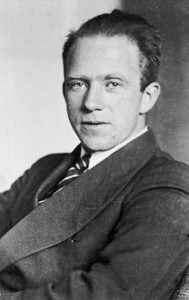 In early 1942 the Germans, still under the leadership of Heisenberg, who had been an associate of Einstein and Neils Bohr before the war, decided that nuclear fission wouldn’t help them win the war and shelved it. The project was taken over by the Reich research Council and split between nine different institutes. Because each of the nine directors followed their ego, dominating the research and working to their own personal objectives, it failed. Thank goodness.
In early 1942 the Germans, still under the leadership of Heisenberg, who had been an associate of Einstein and Neils Bohr before the war, decided that nuclear fission wouldn’t help them win the war and shelved it. The project was taken over by the Reich research Council and split between nine different institutes. Because each of the nine directors followed their ego, dominating the research and working to their own personal objectives, it failed. Thank goodness.
A close call
Every time I read about WW2 I’m amazed at the way things developed. History could so easily have been different. The allies could have lost the war and on many occasions, almost did.
I hope An Incidental Spy, will give readers a real feel for the urgency, the high stakes and the terrible danger anyone whose life was touched by the race for the A-bomb faced. Every one of them was a hero.
More next week in this short series looking at the historical background to my latest story, And, for those of you who know this history backwards and forwards, I realize I have simplified quite a bit. I hope you will understand.
The post The Manhattan Project — Chicago Style appeared first on .
September 3, 2015
Late Summer Mini-Series Binge
Last time I talked about late summer movies. This time it’s TV, which is where all the good stuff is, as you’ve probably noticed. I’ve been binge-watching my way through August and I’ve seen some great mini-series. As an author my stock-in-trade is storytelling, so I’m delighted to recommend these—some are mini-masterpieces.
Rita – The life and times of a Danish school-teacher
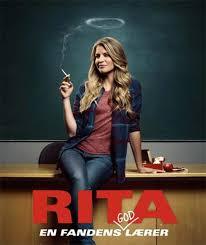 Netflix delivers a really lovely mini-series in Rita, a warm and satisfying three-season comedy drama about a rebellious Danish school-teacher. Rita Madsen, played by the wonderful Mille Dinesen, is a fascinating character, an unconventional, stubborn single mom and teacher. The actress was awarded Best Female Lead for the part at the in Monte-Carlo Television Festival and the show landed six nominations including Best International Producer and Best European producer of a TV drama series. A US remake was planned and a pilot episode filmed in 2013, with Anna Gunn in the starring role, but the series never happened.
Netflix delivers a really lovely mini-series in Rita, a warm and satisfying three-season comedy drama about a rebellious Danish school-teacher. Rita Madsen, played by the wonderful Mille Dinesen, is a fascinating character, an unconventional, stubborn single mom and teacher. The actress was awarded Best Female Lead for the part at the in Monte-Carlo Television Festival and the show landed six nominations including Best International Producer and Best European producer of a TV drama series. A US remake was planned and a pilot episode filmed in 2013, with Anna Gunn in the starring role, but the series never happened.
Rita was filmed in Norway and the Czech Republic, and the dialogue is in Norwegian, German, English and Danish…. which is fine by me, since there’s something very special about subtitles. I know a lot of you don’t like them, but IMHO but to me subtitles enhance a show. There’s something about the written word that makes the plot so much more vivid and clear. I also understand the context of the language that’s being spoken more clearly, and sometimes I pick up a phrase or two. Tac.
The Saboteurs – Stopping the Nazis and Heisenberg in their tracks
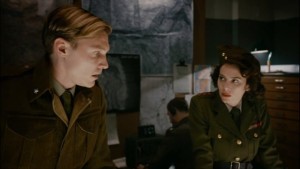 “The Saboteurs,” also called ‘The Heavy Water War’, is about the Norwegian/British effort to blow up the heavy water plant the German physicist Werner Heisenberg was counting on to help him split the atom and make a nuclear bomb. Because my latest novella, The Incidental Spy, has a World War and atomic bomb theme, I found this series particularly relevant.
“The Saboteurs,” also called ‘The Heavy Water War’, is about the Norwegian/British effort to blow up the heavy water plant the German physicist Werner Heisenberg was counting on to help him split the atom and make a nuclear bomb. Because my latest novella, The Incidental Spy, has a World War and atomic bomb theme, I found this series particularly relevant.
The mini-series stars Brit actress Anna Friel and dramatizes the Nazis party’s attempts to build a nuclear weapon and the Allies’ desperate effort to stop them. The first two episodes were broadcast in Norway in January 2015 and attracted more than a million and a quarter viewers, a national record for a drama series. The series has yet to be shown in the US, but you can find it online. It’s masterfully filmed, and the actors are all excellent, making it probably the best of all the series I watched.
X Company – Made in Canada
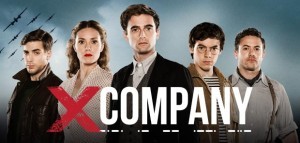 “X Company” is a Canadian series, produced by the same people who made Orphan Black. It’s all about the OSS training camp in Ontario, where the US trained and then sent military recruits to become spies.
“X Company” is a Canadian series, produced by the same people who made Orphan Black. It’s all about the OSS training camp in Ontario, where the US trained and then sent military recruits to become spies.
According to Wikipedia:
“X Company is a Canadian/Hungarian spy thriller television series created by Flashpoint’s Mark Ellis and Stephanie Morgenstern which premiered on February 18, 2015, on CBC Television. The series takes place during World War II, and follows five recruits as they are trained as secret agents at a Canadian training facility near Lake Ontario and then sent out into the field.”
The camp was run by OSS senior official William Stephenson and, of course, the OSS was the forerunner of the CIA. The series was presumably set in France (and Canada) but, in an ‘art mimics reality’ twist, my late father in law, who was off the boat from Germany in 1939, was drafted and sent there.
After his training he was sent back to Germany, behind enemy lines, where he stayed for 2 years. He never talked about it, never told us whether he was a spy, a courier, a radio operator, or something else, so we don’t know what he did. I mentioned this in my first novel, AN EYE FOR MURDER. So I enjoyed “X Company,” even though it got a tad melodramatic as it wound on.
Tyrant – Too far fetched and predictable?

TYRANT – Pictured: (L-R) Salim Daw as Yussef, Mehdi Dehbi as Abdul, Noah Silver as Sammy, Ashraf Barhom as Jamal, Moran Atias as Leila, Jennifer Finnigan as Molly, Adam Rayner as Barry, Anne Winters as Emma, Justin Kirk as John Tucker, Fares Fares as Fauzi, Alice Krige as Amira. CR: Matthias Clamer/FX
“Tyrant” is a home-grown FX series about an “American” pediatrician with an average American family. But he turns out to be the son of a Middle-Eastern tyrant. Think Jordan or Oman or another of the more progressive countries in the area and you get the picture.
He returns to his homeland for a wedding, where his father dies during the festivities, and the prodigal son decides to stay. I only watched two episodes. Despite being produced by some good people, including Gideon Raff who did “Homeland,” the Israeli “Prisoners of War” and “24,” the premise is pretty far-fetched and the series is way too predictable. But apparently this is what happens…
Bassam, AKA Barry, the star of the show, is soon drawn into a tense political crisis, forced to use his influence to guide the country’s new President, his brutal and near-mad older brother Jamal, to a peaceful political solution. If you’ve watched more than I have (It wouldn’t be hard), let me know what you thought of it.
Dicte – Danish reporter turns detective
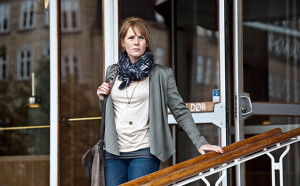 I wasn’t that keen on the premise and wasn’t expecting much. But Dicte turned out to be a lot more substantive, well-acted, and memorable than I expected. I love it when that happens, and it turns out an unexpected surprise is in store from Netflix.
I wasn’t that keen on the premise and wasn’t expecting much. But Dicte turned out to be a lot more substantive, well-acted, and memorable than I expected. I love it when that happens, and it turns out an unexpected surprise is in store from Netflix.
Dicte is about a Danish newspaper reporter who solves crimes. The series is based on best-selling author Elsebeth Egholm’s novels about the same character. Apparently 1.32 million viewers tuned into the first season’s premiere in Denmark. As Denmark’s official website says:
“After The Killing, Government and other Danish TV series have kept viewers across the world spellbound, a new Danish TV thriller series with a strong modern woman as the leading character is ready to follow on from the successes.”
If you enjoy the series as much as me, you can actually visit the places you see in the series on the Visit Aarhus website. Here’s a link (http://www.visitaarhus.com/ln-int/aar...).
What’s your favorite mini-series of the moment?
The post Late Summer Mini-Series Binge appeared first on .
September 2, 2015
The Incidental Spy — Giveaway
It’s getting close to the official launch of the print version of The Incidental Spy — A Novella (September 20), so I’m giving away a couple of copies on Goodreads. Check them out here:
Goodreads Book Giveaway

The Incidental Spy
by Libby Fischer Hellmann
Giveaway ends September 25, 2015.
See the giveaway details
at Goodreads.
Hope you’ll give it a look!
The post The Incidental Spy — Giveaway appeared first on .
August 31, 2015
Stretching Out Summer With Movies
The end of August can be demoralizing. Technically, there are still 3 weeks of summer left, but it often feels as if the season has flown, and I haven’t done any of the things I promised myself. Back-to-school sales are ubiquitous; so are pre-season football games, and my weekly trips to Dairy Queen have lost their allure.
If you feel the same way, I have some suggestions on how to salvage—indeed savor—summer’s final weeks. The movies below will help you stretch and prolong those lazy days filled with sunscreen, salt water taffy, the Boardwalk, surfing, vacations, and the blissful feeling of no responsibility.
Btw, this was a difficult blogpost to write. There are so many summer movies that they’re divided into subsets: Summer Love, Summer Camp, Summer Vacation, Summer Adventure. I’ve tried to include a few from all the categories, especially the ones that I’ve seen and can wholeheartedly recommend. But there are so many good summer flicks that I’ve added more below. 90% of these films are available on Netflix, Hulu, or Amazon, and many are at your public library. Curiously, a lot of these films hark back to the Sixties for their plotline. Not sure what that means, but it didn’t bother me. Hope you enjoy them, too.
The Graduate
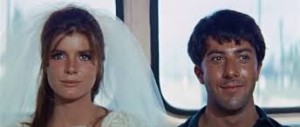 The iconic film of my college years (yes, I’m dating myself), The Graduate proved that Summer in the Sixities wasn’t the best season for Benjamin Braddock—or other recent college graduates. It’s ironic that when it came out that many of my male friends were worrying about the draft, but in this movie, it’s “plastics.” And underwater swimming. And Mrs. Robinson, played beautifully by the late Anne Bancroft. And, of course, there’s Simon and Garfunkel on the track. It’s always great fun to touch base with The Graduate—Director Mike Nichol’s take on American culture in the Sixties, California style, is perfect.
The iconic film of my college years (yes, I’m dating myself), The Graduate proved that Summer in the Sixities wasn’t the best season for Benjamin Braddock—or other recent college graduates. It’s ironic that when it came out that many of my male friends were worrying about the draft, but in this movie, it’s “plastics.” And underwater swimming. And Mrs. Robinson, played beautifully by the late Anne Bancroft. And, of course, there’s Simon and Garfunkel on the track. It’s always great fun to touch base with The Graduate—Director Mike Nichol’s take on American culture in the Sixties, California style, is perfect.
Taking Woodstock
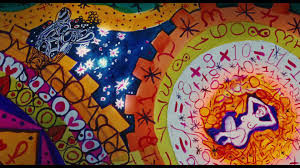 Another view of the late Sixties is the summer film, Taking Woodstock. I LOVED this movie that tells the story of how Woodstock almost didn’t happen. Maybe it’s because the parents of my boyfriend at the time had a summer house in Woodstock, (although the town is actually about 25 miles from the concert site) and after watching it, I felt like I’d been there. Or maybe it’s because of the tropes and vignettes of the times: the young boy who comes of age and finds his sexuality in a VW van; music and drugs galore; his straight but faintly ridiculous mother who gets high for the first time, the unforgettable transvestite who’s also a security guard, played perfectly by Liev Schreiber. It’s a funny, touching story based on the memoirs of Elliot Tiber who helped arrange the concert venue in Bethel, and it illustrates the clash of two generations and cultures. This is a not-to-be-missed summer movie.
Another view of the late Sixties is the summer film, Taking Woodstock. I LOVED this movie that tells the story of how Woodstock almost didn’t happen. Maybe it’s because the parents of my boyfriend at the time had a summer house in Woodstock, (although the town is actually about 25 miles from the concert site) and after watching it, I felt like I’d been there. Or maybe it’s because of the tropes and vignettes of the times: the young boy who comes of age and finds his sexuality in a VW van; music and drugs galore; his straight but faintly ridiculous mother who gets high for the first time, the unforgettable transvestite who’s also a security guard, played perfectly by Liev Schreiber. It’s a funny, touching story based on the memoirs of Elliot Tiber who helped arrange the concert venue in Bethel, and it illustrates the clash of two generations and cultures. This is a not-to-be-missed summer movie.
Weekend at Bernie’s
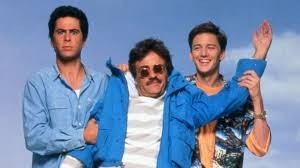 Weekend at Bernie’s is not for everyone, unless you’re the type who likes black comedy. The premise is that two young men working for an insurance company stumble on a financial fraud, take it to their boss, Bernie. He invites them to his house on the Hamptons for the weekend to congratulate them on their earnestness where they discover that Bernie ordered hits on them because he has perpetrated the fraud. However, the mob double-crosses Bernie and kills him instead. The two young men, who still fear retribution, pretend Bernie is still alive and keep his corpse with them all weekend. It’s silly, totally unrealistic, but hilarious. Which makes it a perfect summer film.
Weekend at Bernie’s is not for everyone, unless you’re the type who likes black comedy. The premise is that two young men working for an insurance company stumble on a financial fraud, take it to their boss, Bernie. He invites them to his house on the Hamptons for the weekend to congratulate them on their earnestness where they discover that Bernie ordered hits on them because he has perpetrated the fraud. However, the mob double-crosses Bernie and kills him instead. The two young men, who still fear retribution, pretend Bernie is still alive and keep his corpse with them all weekend. It’s silly, totally unrealistic, but hilarious. Which makes it a perfect summer film.
Little Miss Sunshine
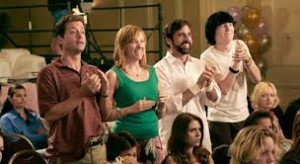 One of the funniest, most charming movies of the past ten years, with an amazing cast that includes Steve Carell, Greg Kinnear, Toni Collette, and Alan Arkin (I’m sorry, but all I have to do is look at him, and I start to giggle). It tells the story of a family determined to get their young daughter into the finals of a beauty pageant who take a cross-country trip in their VW bus. Of course, the family is highly dysfunctional, with a son who hasn’t spoken in a year, a brother who is suicidal, a father who’s getting fired, a working mother who thinks a nutritious dinner is a bucket of KFC, and a gradfather who has his own ideas about dance routines. The film isn’t implicitly tied to summer, but it couldn’t have happened during any other season. You’ll laugh, you’ll cry, you’ll cheer. This is another not-to-be-missed movie.
One of the funniest, most charming movies of the past ten years, with an amazing cast that includes Steve Carell, Greg Kinnear, Toni Collette, and Alan Arkin (I’m sorry, but all I have to do is look at him, and I start to giggle). It tells the story of a family determined to get their young daughter into the finals of a beauty pageant who take a cross-country trip in their VW bus. Of course, the family is highly dysfunctional, with a son who hasn’t spoken in a year, a brother who is suicidal, a father who’s getting fired, a working mother who thinks a nutritious dinner is a bucket of KFC, and a gradfather who has his own ideas about dance routines. The film isn’t implicitly tied to summer, but it couldn’t have happened during any other season. You’ll laugh, you’ll cry, you’ll cheer. This is another not-to-be-missed movie.
Little Darlings
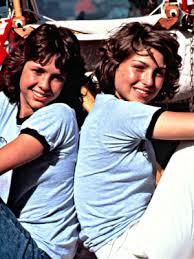 Part summer camp, part coming of age, part “mean girls” story, the 1980 film Little Darlings stars a young Tatum O’Neal, Matt Dillon, Kristy McNichol, and Armand Assante. (Great cast!) A group of teenage girls at camp for the summer discover boys across the lake and two of them spend the summer competing on how to lose their virginity with them. The two teens, of course, hate each other for their differences—one is educated and cultured, the other hip and street-smart. Naturally, they bond at the end when dealing with the aftermath of the big “events.” A great summer movie for teenage girls… and their Moms.
Part summer camp, part coming of age, part “mean girls” story, the 1980 film Little Darlings stars a young Tatum O’Neal, Matt Dillon, Kristy McNichol, and Armand Assante. (Great cast!) A group of teenage girls at camp for the summer discover boys across the lake and two of them spend the summer competing on how to lose their virginity with them. The two teens, of course, hate each other for their differences—one is educated and cultured, the other hip and street-smart. Naturally, they bond at the end when dealing with the aftermath of the big “events.” A great summer movie for teenage girls… and their Moms.
Dirty Dancing
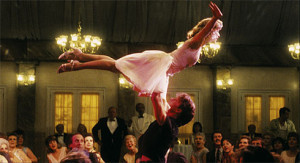 Is there anything I can say that hasn’t already been said about this fabulous “Summer Camp for grown-ups” movie? Yes, I miss Patrick Swayze. And I miss pre-nose job Jennifer Grey—I always thought she was more attractive and unique with that nose. But then, there’s the music, the Catskills, the culture of the early Sixties. There’s also a wonderful performance by Jerry Orbach (another actor who is missed), and of course, the dancing. Wow! The clash between the conservatives and the hipsters still rings true. The summer love affair between the two leads does as well (even though they theoretically didn’t like each other during the shoot). The only quibble I have is the sappy ending. But, hey, it’s a summer movie—about love, conflict, sex, and dancing all rolled up in one. Worth re-watching if you haven’t seen it in a while. Or if your parents dragged you to a “grown-ups summer camp.”
Is there anything I can say that hasn’t already been said about this fabulous “Summer Camp for grown-ups” movie? Yes, I miss Patrick Swayze. And I miss pre-nose job Jennifer Grey—I always thought she was more attractive and unique with that nose. But then, there’s the music, the Catskills, the culture of the early Sixties. There’s also a wonderful performance by Jerry Orbach (another actor who is missed), and of course, the dancing. Wow! The clash between the conservatives and the hipsters still rings true. The summer love affair between the two leads does as well (even though they theoretically didn’t like each other during the shoot). The only quibble I have is the sappy ending. But, hey, it’s a summer movie—about love, conflict, sex, and dancing all rolled up in one. Worth re-watching if you haven’t seen it in a while. Or if your parents dragged you to a “grown-ups summer camp.”
And… if the above list isn’t enough and you’re still in the mood for Summer Movies, here are some others worth checking out.
Body Heat
American Graffiti
The Talented Mr. Ripley
Meatballs
Now and Then
Y Tu Mama Tambien
Stand By Me
Dazed and Confused
Some Like It Hot
Deliverance
Days of Summer
The Parent Trap
Adventureland
Endless Summer
National Lampoon’s Vacation
Knife in the Water
Deliverance
Jaws
Letters to Juliet
What have I missed?
The post Stretching Out Summer With Movies appeared first on .
August 25, 2015
5 Possible Settings For My Next Thrillers
With a world of exciting, mysterious and historic locations to write about, I’m often asked where I’ll set my next story. Happily, there are plenty of places on my agenda, and if I write a caper novel, which I’m considering btw, I might have even more places to discover. For now, though, here are my top five, all fascinating and all ripe for adventure.
Bletchley Park – Milton Keynes, Buckinghamshire, UK
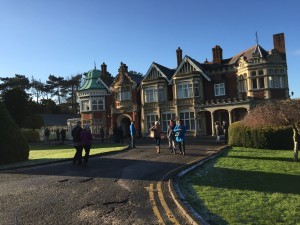 This is a definite. I’m between books right now but when I finish revisions on the next Ellie Foreman novel, I’m going to write a novella about Bletchley Park. For those of you who aren’t familiar with the location, it’s where the story of Alan Turing and the Enigma machine unfolded.
This is a definite. I’m between books right now but when I finish revisions on the next Ellie Foreman novel, I’m going to write a novella about Bletchley Park. For those of you who aren’t familiar with the location, it’s where the story of Alan Turing and the Enigma machine unfolded.
Bletchley Park was the central site of Britain’s Government Code and Cypher School. In World War Two the scientists, mathematicians and codebreakers working there frequently penetrated the Nazis’ secret communications, most importantly the Germans’ Enigma machine.British Intelligence reckons their efforts shortened the war by as much as four years. These days, though, Bletchley is an educational and historical site celebrating the accomplishments of its wartime heroes.
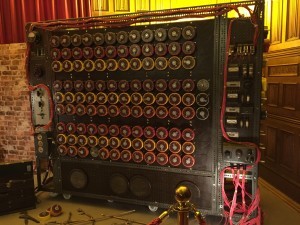 I visited the UK last Christmas and one of the highlights was a tour of Bletchley Park. At the time I was in the middle of writing a novella called The Incidental Spy, due out this September. It’s about a German refugee who is forced to spy on the Manhattan Project in Chicago. While touring Bletchley Park I decided I wanted to write another WW2 novella, but this time about a female British codebreaker working at Bletchley. Then I’d package them together as a WW2 period piece.
I visited the UK last Christmas and one of the highlights was a tour of Bletchley Park. At the time I was in the middle of writing a novella called The Incidental Spy, due out this September. It’s about a German refugee who is forced to spy on the Manhattan Project in Chicago. While touring Bletchley Park I decided I wanted to write another WW2 novella, but this time about a female British codebreaker working at Bletchley. Then I’d package them together as a WW2 period piece.
The dramatic Amalfi Coast, Italy
 During one of my interior redecorations, I hung a two-panel painting of the Amalfi Coast above my bed. It’s so beautiful and dramatic, that I decided I want—no,I need—to go there myself. I haven’t done it yet, but it’s almost as good visiting the area in my head, and imagining a story set there.
During one of my interior redecorations, I hung a two-panel painting of the Amalfi Coast above my bed. It’s so beautiful and dramatic, that I decided I want—no,I need—to go there myself. I haven’t done it yet, but it’s almost as good visiting the area in my head, and imagining a story set there.
I can just see my protagonist whipping around those narrow roads in a sports car, James Bond style, careening so close to the edge that whoever is in the passenger seat is sure they’re going over a cliff. I also see a character in a small boat gliding up and down the coast admiring the view, or drinking rough red wine in a quaint Sorrento restaurant, or even hiking where it’s safe.
Safe? Oh wait… that would be me, not my character. My character would take risks. She’d choose the most dangerous path, right? That’s one of the best things about writing fictional characters – they get to experience a location in a way that would be impossible for me, even if I dared. So if it looks like it’s over the edge of a cliff, then…
Greece and the Greek islands
 Despite the troubles, or maybe because of them, mainland Greece and the Greek islands are starting to call to me. All sorts of crimes can occur when an economy is in crisis, and I can’t think of another country that is so simultaneously beautiful and in such bad shape.
Despite the troubles, or maybe because of them, mainland Greece and the Greek islands are starting to call to me. All sorts of crimes can occur when an economy is in crisis, and I can’t think of another country that is so simultaneously beautiful and in such bad shape.
I’ll bet prices drop to rock bottom, and I want my characters to take advantage of them. They might take a detour into Cyprus—I actually know a couple of authors who live there and might be willing to give me a tour. All in the name of research, of course. And the Greek islands beckon, hundreds of tiny, rocky places dotting the bright blue Mediterranean sea, each with its own personality.
The Home of Scandanavian Noir
 OK, I confess, all those Nordic books and TV shows I’ve read and watched have persuaded me I need to set at least a few chapters in Sweden and/or Denmark, exploring the capitals, Stockholm and Copenhagen, as well as smaller towns and villages.
OK, I confess, all those Nordic books and TV shows I’ve read and watched have persuaded me I need to set at least a few chapters in Sweden and/or Denmark, exploring the capitals, Stockholm and Copenhagen, as well as smaller towns and villages.
They’re places of beautiful lonely scenery and plenty of darkness – especially in winter when night lasts forever. I’m not sure whether to set it in summer or winter but I can already see my characters meeting up with Lisbeth Salander and the actors on the Bridge, or even Borgen, when she’s not flying around the world being the Foreign Minister. Something about Scandanavian landscapes just shouts ‘noir’, and to me, resistance is futile.
Rio and Buenos Aires
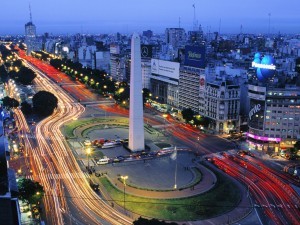
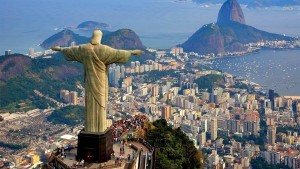 Back to the sunshine. Having never been to South America, I feel its only fair to visit, at least in fiction. Rio and Buenos Aires are high on the list, Rio because everyone says it’s the biggest party city in the world, and Buenos Aires because Che Guevara grew up there… plus a lot of WW2 Nazis were able to hide there after the war.
Back to the sunshine. Having never been to South America, I feel its only fair to visit, at least in fiction. Rio and Buenos Aires are high on the list, Rio because everyone says it’s the biggest party city in the world, and Buenos Aires because Che Guevara grew up there… plus a lot of WW2 Nazis were able to hide there after the war.
These cities would be the perfect location to follow up on two of my thrillers, Havana Lost and An Eye For Murder. And the idea strongly appeals to me. In fact, I might have to start by writing a short story about each city.
The world at my keyboard
Of course, these five are just the tip of the iceberg. I’ve left out a lot of locations—there just aren’t enough years in one lifetime to write or visit all of them. But if I get to these five, even if it’s just through fiction, I’ll check them off my bucket list.
What’s your favorite place to visit and/or write about? Leave a comment and let me know.
The post 5 Possible Settings For My Next Thrillers appeared first on .
August 20, 2015
Research: Falling Through The Wormhole
 I’ve been trying to figure out why I love doing research—much more than writing, btw—and I finally think I have an answer. Research is a free-form activity, especially on the internet. I Google a topic, scan a few articles, and if something catches my fancy, I click on the link or do another Google search to find out more about it.
I’ve been trying to figure out why I love doing research—much more than writing, btw—and I finally think I have an answer. Research is a free-form activity, especially on the internet. I Google a topic, scan a few articles, and if something catches my fancy, I click on the link or do another Google search to find out more about it.
For me, research is the purest form of learning, short of plowing through the textbooks and syllabi we were assigned in school or university. Because I decide what I’ll read and study, I am empowered. I choose the topic. I make the analysis. I decide whether it’s relevant. I fall through the wormhole of history, content to explore what I want, make side-trips, and generally get lost in the other times and other places. It’s incredibly seductive.
However, at some point, an idea for a story floats to the surface. It might be the period I want to write about; an event that represented a seminal change in society at a particular time; or perhaps a character who demands that I pay attention to her or him. After almost twenty years of writing, I’ve realized I need to pay attention to those red flags.
That’s when I start my real “research process,” which follows.
The Fun Part
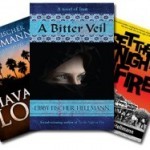 Once I have an idea of the time period I want to write about, I make a list of the fiction and nonfiction books that have been written about that period, and I read them. I take copious notes from all the books, but I fact check the fictional ones to make sure they’re accurate. When I wrote A Bitter Veil, for example, I read about 20 books all told.
Once I have an idea of the time period I want to write about, I make a list of the fiction and nonfiction books that have been written about that period, and I read them. I take copious notes from all the books, but I fact check the fictional ones to make sure they’re accurate. When I wrote A Bitter Veil, for example, I read about 20 books all told.
Visual Records
Because most of my historical novels are set in recent history, ie the 20th century, I’ll go on the internet to see if there’s any film about the time period. Usually, there is. 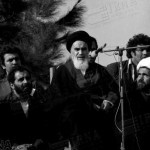 For example, I found film of Ayatollah Khomeini’s return to Tehran and the speech he made at a Tehran cemetery. Of course, I don’t speak Farsi, but just watching his body language, face, and listening to his intonation told me a lot about the man. The same was true with Fidel Castro and Che Guevara in my Cuban set thriller, Havana Lost. I must have watched 6 or 7 films about Cuba, set during the revolution and after. And, of course, there were enormous amounts of footage of the 1960’s and the Democratic National Convention for Set The Night On Fire (some of which, btw, I got the rights to use in the video trailer).
For example, I found film of Ayatollah Khomeini’s return to Tehran and the speech he made at a Tehran cemetery. Of course, I don’t speak Farsi, but just watching his body language, face, and listening to his intonation told me a lot about the man. The same was true with Fidel Castro and Che Guevara in my Cuban set thriller, Havana Lost. I must have watched 6 or 7 films about Cuba, set during the revolution and after. And, of course, there were enormous amounts of footage of the 1960’s and the Democratic National Convention for Set The Night On Fire (some of which, btw, I got the rights to use in the video trailer).
Visual records include photographs. Since I was a video producer in another life, photos have a huge impact on me. It’s not just the subject of the photo; it’s also the time of day it was shot, the contrast, and what is happening in the background of the shot. All those factors have a bearing on how I will eventually describe the setting.
Articles
The next step is to follow up on the internet with articles that are focused on the specific time period and place I’m going to write about. I print them out, highlight salient points, and take notes. By then, I’m starting to get a picture of the time period, the conflicts, the stakes, and what really happened. Similar patterns emerge and I feel more confident that I understand the gestalt of events.
Primary Research
 That’s when I switch to primary research. If possible, I visit the setting itself. I went to Cuba, for example, for Havana Lost; I lived through the Sixties. I went down to the U of Chicago to research the early years of the Manhattan Project for The Incidental Spy; I went to Lawndale and toured the neighborhood when I wrote An Eye For Murder.
That’s when I switch to primary research. If possible, I visit the setting itself. I went to Cuba, for example, for Havana Lost; I lived through the Sixties. I went down to the U of Chicago to research the early years of the Manhattan Project for The Incidental Spy; I went to Lawndale and toured the neighborhood when I wrote An Eye For Murder.
If it’s not possible to actually travel to the place, I look for at least 5 people I can interview who lived through the time period or event, or whose relatives did. I make a list of questions, most of which are fairly mundane, For example, what did people wear? What did they eat? What was the most important part of the day? What was it like to live in that place? Were you happy? Complacent? Unsettled? I try to tape those interviews so I have them close at hand. Even if I have visited the setting, I’ll still try to find people who are from the area or whose parents were.
Writing the Draft
Finally I’m ready to start writing. During the process, new questions always come up, so I’ll call or interview the people I spoke to previously to nail down facts. If that’s not possible, I’ll Google several sources, until I am comfortable that I have a reasonable facsimilie of the truth.
Plot Possibilities
The most satisfying part of the research is that it often leads to interesting plot points I’d never considered. That’s happened in all my historical novels. In 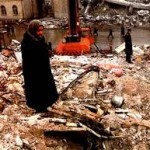 An Image of Death, for example, I needed to create the backstory for a character who was from Armenia and grew up under Communism. I found out there was a huge earthquake in Armenia in 1988, so bad that Soviet soldiers were called in to help with the aftermath. But they didn’t have the right equipment, and the rescuers got sick and had to be rescued . That’s how my character, Arin, met the man whom she subsequently married. He was a Soviet Army officer in the hospital, and she was a volunteer.
An Image of Death, for example, I needed to create the backstory for a character who was from Armenia and grew up under Communism. I found out there was a huge earthquake in Armenia in 1988, so bad that Soviet soldiers were called in to help with the aftermath. But they didn’t have the right equipment, and the rescuers got sick and had to be rescued . That’s how my character, Arin, met the man whom she subsequently married. He was a Soviet Army officer in the hospital, and she was a volunteer.
Before I send out the book for editing, I make sure one or two of the people I interviewed read the manuscript to make sure I didn’t get anything wrong. If that’s not possible, and I haven’t visited the place myself, I’ll seek out someone in academia to review the manuscript for accuracy. My nightmare fantasy is a reader who throws my book across the room, saying, “She doesn’t know what she’s talking about.”
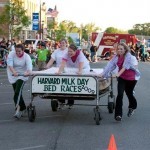 So far, that hasn’t happened, at least in a big way. I did get an email from a reader of my first novel, An Eye For Murder, who told me I’d made a big mistake. I’d called an event that started during World War Two in Harvard, Illinois, “Milk Days.” I was wrong, she claimed. “It was ‘Milk Day,” not “Milk Days.” How did she know? Her father was the mayor of Harvard when the event was first launched.
So far, that hasn’t happened, at least in a big way. I did get an email from a reader of my first novel, An Eye For Murder, who told me I’d made a big mistake. I’d called an event that started during World War Two in Harvard, Illinois, “Milk Days.” I was wrong, she claimed. “It was ‘Milk Day,” not “Milk Days.” How did she know? Her father was the mayor of Harvard when the event was first launched.
I apologized.
The post Research: Falling Through The Wormhole appeared first on .



